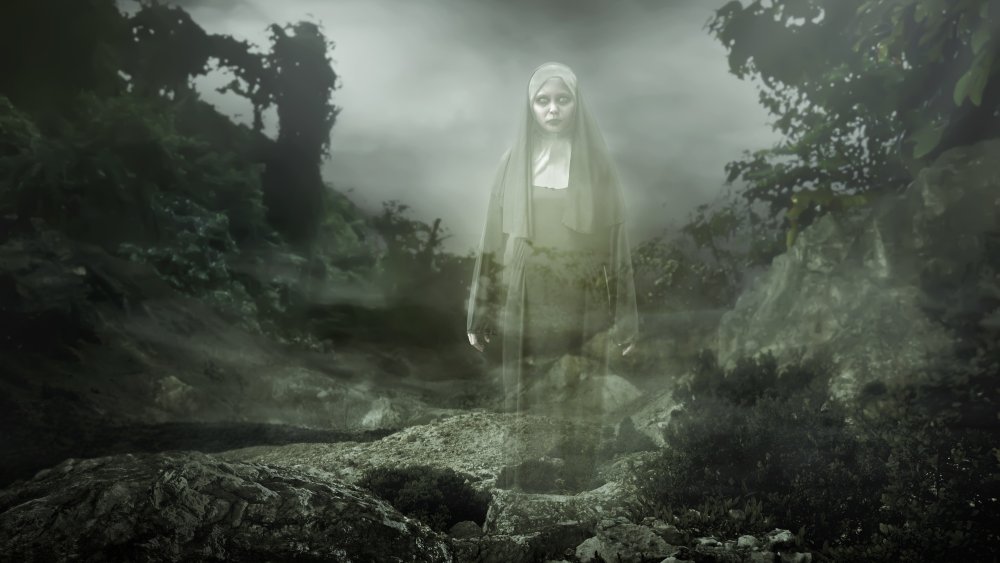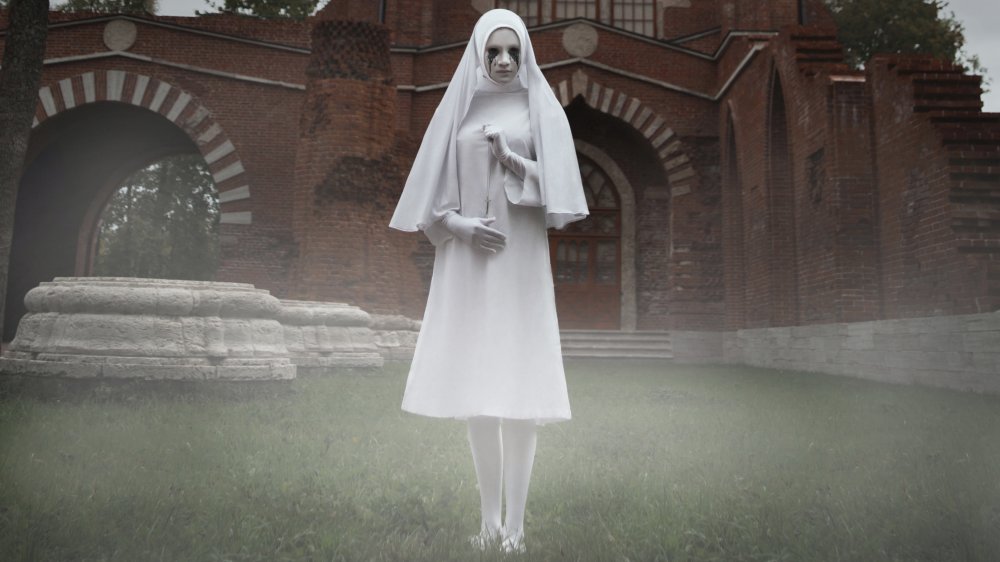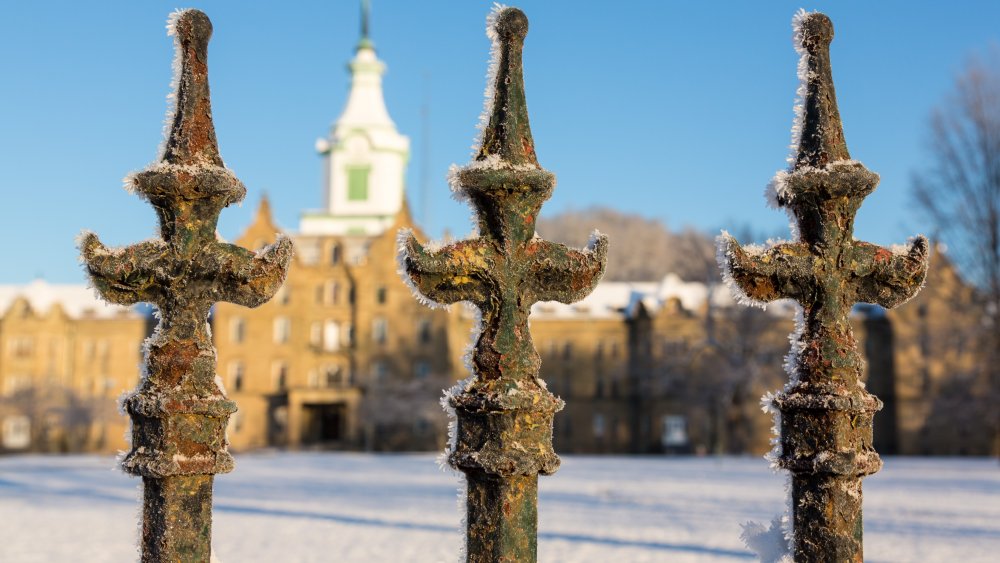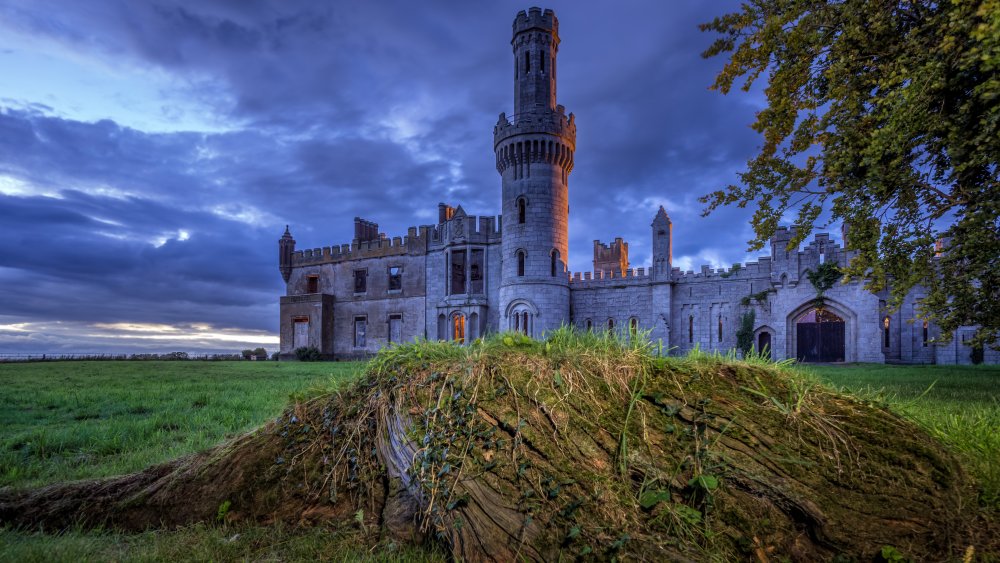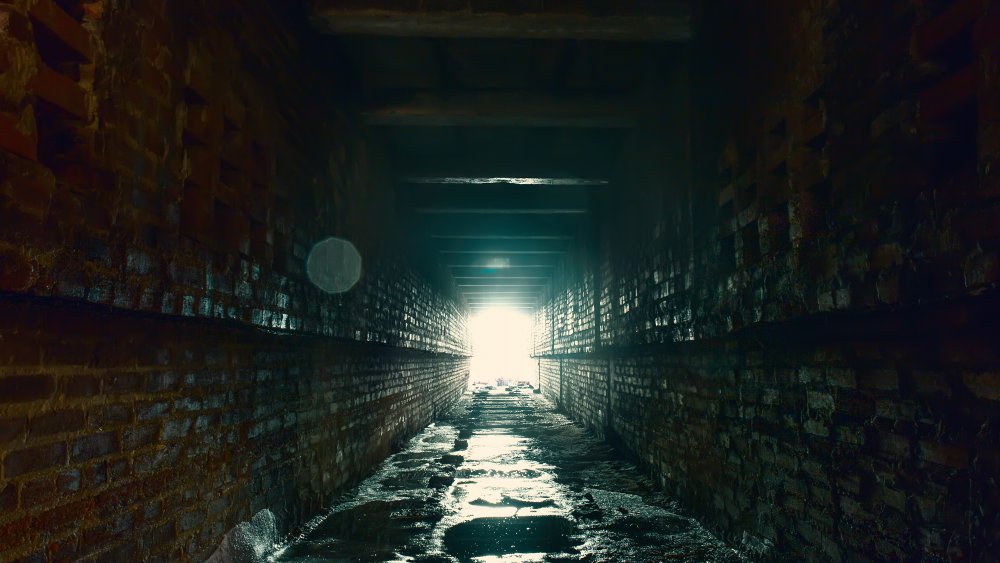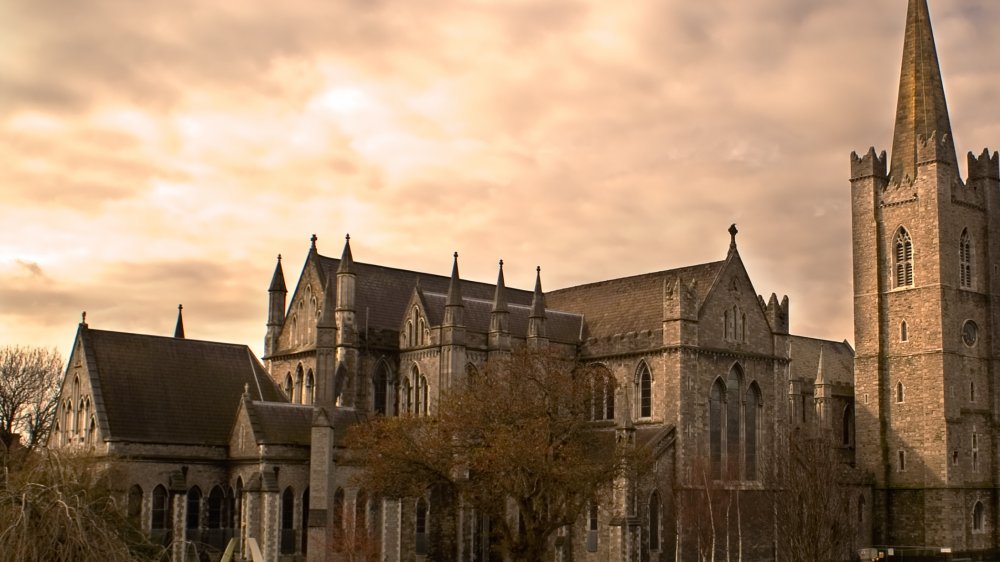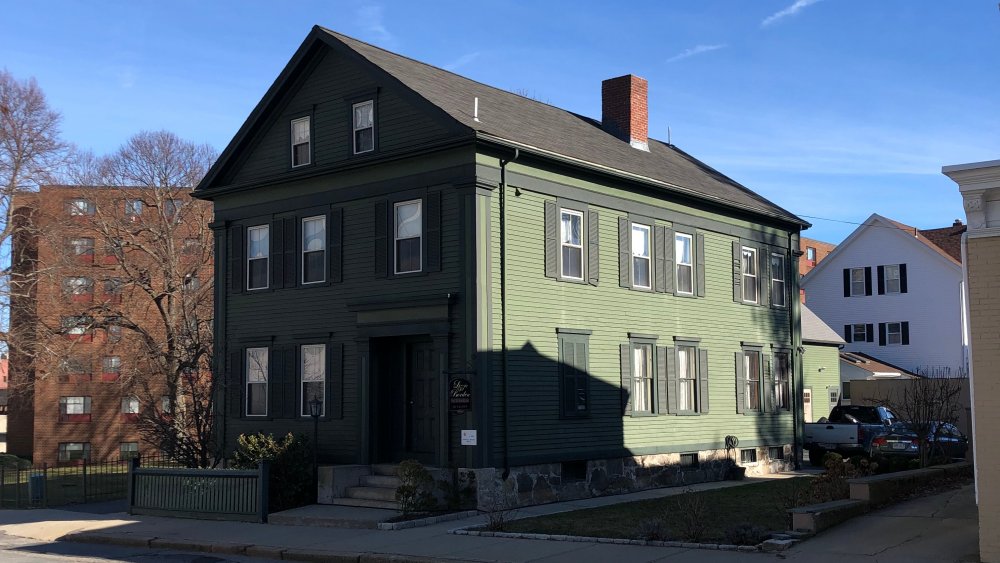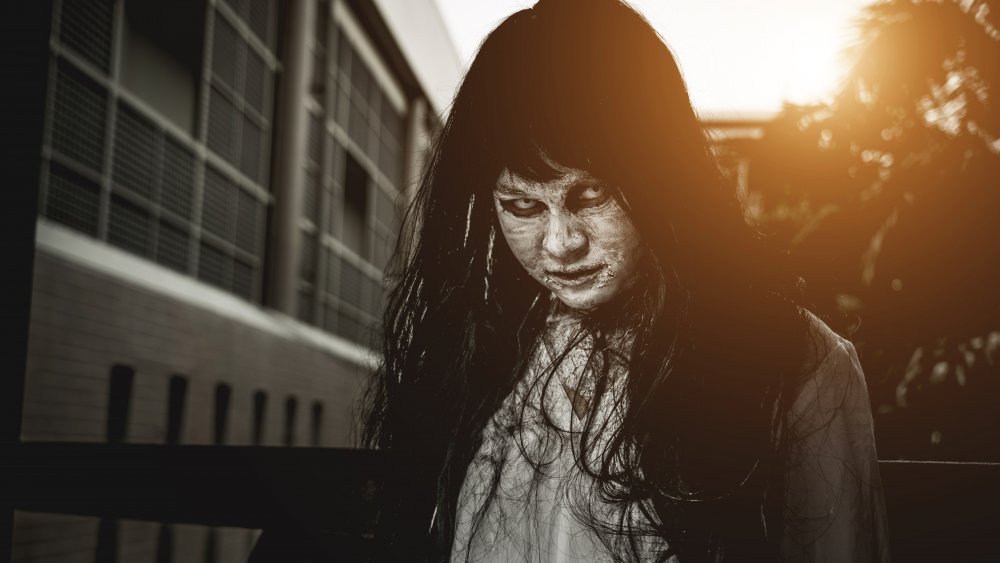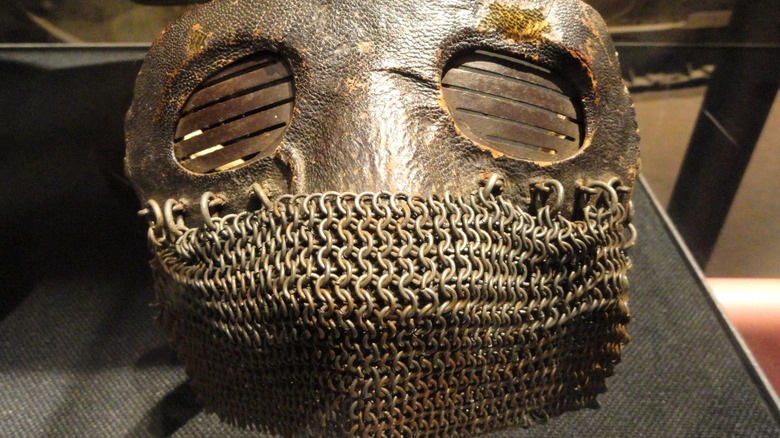
Creepy Tales Of Victorian Ghosts
The Victorian era was defined by many things, including the paranormal. Those who lived during the reign of Queen Victoria — no matter where in the world they actually lived — seemed obsessed with spiritualism, death, and the afterlife. The result? They left behind stories of hauntings, spirits that still walk the earth, and not a few who made deals with the devil.
So, why is there such a strong connection between the Victorian era and the supernatural? The Guardian suggests there’s a few things going on here. For starters, there was a massive shift in economics, which meant a previously rural-based society was suddenly finding itself in the old, creaky, mysterious buildings of the cities. Advances in communication — like the telegraph — were putting people in touch with others an ocean away, and that was getting people to think about communication from the Great Beyond. And finally? It’s entirely possible the widespread use of gas lamps — especially inside — has something to do with convincing people there were spirits around.
Whatever the reason, some of the best ghost stories out there are settled firmly in the Victorian era. Let’s talk about some of them… and you can decide if they’re real, or just hallucinations.
Hauntings that span the centuries… or, do they?
According to Essex Ghost Hunters, the story of Borley Rectory starts with a monk who lived in the Benedictine monastery that was built on the site in the 1300s. He and a nun from a nearby convent became involved in a steamy affair, which ended with his execution and the nun being bricked up — alive — within the convent walls. Unsurprisingly, they’re both regularly said to be spotted roaming the grounds.
New Horizons says that by the turn of the century, the reports of the ghosts were well cemented in local lore: phantom carriages, mysterious lights, footsteps in empty rooms, objects hurled to the floor. By the early 20th century, owners — particularly Marianne Foyster, the lady of the house — claimed it only escalated. Foyster said she regularly saw the Rev. Harry Bull, who’d built the house in 1863. He seemed to appear to her and one particular guest, Edwin Whitehouse, a WWI soldier recovering from shellshock. Now, writing appeared on the walls, furniture moved, and bells rang.
Was the ghost of Harry Bull upset with the new owners? As great a tale as that is, it’s unlikely: according to The Guardian, it was all a hoax built on the reputation cemented by the original tale of the nun and the monk… which was also completely untrue. As for the house? It was destroyed in a fire in 1939.
More tragedy than a house should have to suffer
Monte Cristo, an elegant Victorian mansion that sits in the town of Junee, NSW, Australia, was the height of elegance and opulence in the 1880s. As the family home of the town founders, it was once the site of fancy dances and parties… and, Science Focus says, a lot of tragedy. The house was built in 1884 by Christopher Crawley, says Australian Geographic, and those who have lived there over the years have reported seeing mysterious lights, hearing footsteps from the upper floors, and capturing eerie images in photographs. Who’s haunting the homestead?
Locals tell the tale of a young maid who died after falling from a balcony. Or… was she pushed by the man who wanted to hide the fact that he was the father of her unborn child? Witnesses claim to see her, walking to the stairs where she died.
Then, there’s the stable boy: who set his mattress on fire… and why? And finally, there’s the Crawley’s youngest child, Magdalena. Her image has been captured in photographs, giving rise to the story that she’s still haunting the house where she died in a fall down the stairs. Or… was there more to this story, too? It’s been suggested that her nanny dropped her on purpose. Mrs. Crawley has remained there, too… visitors say that the sensation of snow falling indicates her spirit is present.
Built on haunted grounds
Thomas Whaley was there for the slow hanging of a thief called James “Yankee Jim” Santiago, convicted in 1852. Whaley bought that very property only a few years after the botched hanging, and according to the Whaley House official history, he heard the heavy footsteps of Yankee Jim’s ghost from nearly the day he moved in.
Some might say that the Whaley House was cursed. Ghosts and Gravestones says that it wasn’t long after the Whaley family moved in that their first child — 18-month-old Thomas — succumbed to scarlet fever and died. Just a few months later, a fire broke out in the general store they’d opened on the property, and they moved to San Francisco to recover. They didn’t sell the house, though, and returned in 1868. They should have stayed away.
By 1871, it was also the headquarters for the city’s courthouse, and that’s when armed robbers held Mrs. Whaley at gunpoint, and stole all the city records. Then, youngest daughter Violet committed suicide, despondent over a failed marriage, and both Whaley parents — along with two more children — would die in the house.
They’re all still there: Thomas Whaley is often seen standing at the top of the stairs, and his wife’s spectral form is often seen drifting through the rooms. Violet is also there, with the Whaley family dog, a terrier named Dolly, and Baby Thomas… who can often be heard giggling and sometimes? Sometimes he’s crying.
Sometimes, ghosts are only looking for help to move on
Preston Manor was built in Sussex, and according to Haunted Rooms, it’s been the site of eerie occurrences since at least the 16th century. But let’s fast-forward a bit to the Victorian era, and the ghostly nun who approached a man for help. According to the story, the so-called White Lady appeared to several members of the Stanford family, starting in earnest around 1896… although she’d been spotted for centuries. Now, though, the activity was getting hardcore: the figure was seen frequently and was even blamed for cutting strange patterns into clothing. It was the same year that a man visiting the family reported that the spirit spoke to him.
She told him that in life she had been a nun, who had been excommunicated and buried in unconsecrated ground. The excommunication had been unjust, and condemned her to walk the world of the living. And… here’s where things get super weird, says Brighton & Hove News.
The Stanfords held a seance, and claimed to have the story confirmed. Her name was Sister Agnes, and she only wanted a Christian burial. Just a few weeks later, the house was permeated with a stench so strong the family moved out, and hired workmen to clean the drains. There, they found the 400-year-old remains of a woman, who was given her proper burial. The White Lady never appeared again.
Lily, who haunts the only home she ever knew
The Trans-Allegheny Lunatic Asylum has been home to scores of wretched souls, and at first, it was a pleasant place to be. But by the 1880s, Victorian ideals of mental illness and what qualified a person for commitment had led to overcrowding, unsanitary conditions, and cruelty. And that was the world little Lily was born into. Today, Lily is one of the most commonly spotted spirits, and according to America’s Most Haunted, she flashes lights, plays music on her music box, and she remembers frequent visitors and staff, often rolling a ball back and forth with them.
No one’s entirely sure what Lily’s story is, but there’s a few theories. The first suggests she might be the daughter of a patient simply identified as “E,” who was left at the asylum to give birth. She and her daughter, Lily, spent the rest of their lives there.
Another goes back even farther, and says that in 1863, Gladys Ravenfield was first abandoned by her husband, then assaulted and raped by a group of soldiers. She became pregnant, was taken to the asylum, and gave birth to a little girl who never left. That story was actually created as a part of a promotional TV event and isn’t grounded in historical records, but Lily? Those who have met her promise that she is very real.
The birth of a banshee
Built in Ireland’s Co. Carlow, Waterways Ireland says that it was in 1830 that William Duckett transformed a modest, two-story home into something out of a fantasy novel based loosely in history. Duckett Grove would ultimately be destroyed by a fire in 1933, but those who visit the grounds might still hear the shrieks of the banshee that haunts it… if, that is, they’re extremely unfortunate.
According to the story, William Duckett was somewhat notorious for the parties he’d throw at the mansion (via Abandoned Spaces). Given his popularity, it’s not entirely surprising that there were rumors he’d turned away from his second wife and kicked off an affair with a younger woman. That woman was riding her horse on the grounds when she fell and died, and her grieving mother cursed the property and the family. To this day, the shrieking of the banshee is heard when someone is about to die.
Over the years, people have reported not only seeing William Duckett’s phantom carriage coming and going, but deaths foreshadowed by the shrieking banshee. The screams, it’s said, last for two days and nights and when they end, someone dies — including a woman who dropped dead of unknown causes, and a garden worker who heard the cries just before his mother died.
The underground tales of Portland's Victorian-era past
If you’ve ever heard the slang term of someone “shanghaiing” someone else, that’s a reference to a practice that is of dubious historical authenticity… even though it makes for a great story.
According to Atlas Obscura, it all starts in the Portland Underground, which was also called the Shanghai Tunnels. Throughout the late 19th century, the tunnels connected bars, hotels, and the Willamette River docks. Even as legit business went on above-ground, things were different in the tunnels. Those who weren’t careful would find themselves drugged and shipped off either into a life of prostitution, slavery, or into servitude on board a ship — usually bound for China, giving the practice of being “shanghai’d” that particular name.
Did it really happen? It’s uncertain and the answer is probably “not really,” but there was shadiness going on in the tunnels, which were home to a number of opium dens. But… possibly? According to Portland Ghosts, the old tunnels are still haunted by the souls of those who had their lives changed forever in Portland’s seedy underground, and hey, good news — most of the spirits are pretty harmless. They’re known for tugging on clothes, pulling on hair, turning lights off, and whistling… although some people have been reported being shoved to the ground, which brings up an important question… are the people who did the shanghaiing still there, too?
There's nothing like the love of a dog
Anyone who’s been to Ireland in the dead of winter knows that the island is subject to brutal storms, and the winter of 1861 was no exception. According to Saint Patrick’s Cathedral, it was on February 8 that the Neptune was smashed against the pier during a storm, and Captain John McNeill Boyd summoned his men to go to their aid.
The men of the Coast Guard struggled to get to the crew, until finally, there was a lull in the storm. It was around noon, and Boyd, his men, and some of the townsfolk who had come to help were standing on the breakwater. A massive wave hit: Boyd, along with five of his men and 21 civilians were washed out to sea.
It was several weeks before Boyd’s body was recovered. In the meantime, search and rescue crews were accompanied by his faithful dog, a massive Newfoundland. The dog was in the boat that finally recovered his remains, and when he was buried on March 5, still, the dog stayed with him. No one was able to persuade the dog to move or to eat, and eventually, he died — still laying on the grave. To this day, visitors to the graveyard at St. Patrick’s still sometimes see Boyd’s faithful dog, laying at the base of the statue erected to his master.
Did she give her mother 40 whacks?
It was one of the most notorious crimes of the 19th century: the murders of Lizzie Borden‘s father and stepmother. On August 4, 1892, Andrew Borden and his wife, Abby, were murdered in an almost unthinkable attack that, according to American Heritage, only stopped when “little was left of Andrew’s face,” and as for Abby? “[…] her head and neck [were] a bloody mess.” Given that restless spirits are so often connected to violent deaths, it’s no surprise that New England Today says that the home is haunted.
The house is now a B&B, and it’s sort of a preserved crime scene. Those who stay there — and they can stay in Lizzie’s old bedroom, and the room where Abby was murdered — have frequently reported hearing laughter coming from the attic bedrooms. Others have been touched by unseen hands, heard whispers, and, according to Country Living, plenty of visitors have seen shadowy figures that definitely, absolutely, positively show up in photos.
These ghosts, at least, can apparently be bribed to stay silent throughout the night. Andrew Borden has reportedly never appeared if a few coins are left on the bureau in his bedroom, and if toys are left in the attic, the children there will remain silent. Sleep tight!
The ghosts of opulence and jealousy
In 1872, the Marques de Linares and his wife built what might be one of the gaudiest, most over-the-top expressions of wealth ever. Their villa — located on the Gran Via of Madrid — is said to be haunted by someone who can often be heard whispering, “I had a daughter.” According to The Daily Beast, investigators have found a ton of evidence, so… what’s the story?
The Marques who built the home, Jose de Murga y Reolid, had been forbidden to marry Raimunda de Osorio y Ortega, the daughter of a cigar seller. It wasn’t her standing that his father disapproved of, it was her unknown parentage. After his father died, Jose went ahead and married Raimunda… then, he found a letter his father had left him, admitting that he was Raimunda’s father. Jose had just married his half-sister. According to the tale, the couple received papal permission to remain married, as long as they had no children. They failed in upholding that end of the bargain, though, and reportedly murdered their daughter and buried her in the walls of the mansion.
None of that has any basis in historical fact, although some have suggested the tale is a bit of karma, delivered on a couple who built the most obnoxiously gold and gilded home imaginable, while their city struggled in the face of the increasing inequalities of the Industrial Age.
Hell hath no fury like a woman scorned
Whether or not you believe in hauntings, ghosts, and spirits, well, sometimes, you at least have to admit that the tales behind the hauntings are completely true. Take the oft-reported haunting of the Vermont College of Fine Arts. For a long time, students and faculty have said it’s haunted by the spirit of a murdered woman named Anna, who can be heard whispering words like “lover” and “jealous.” Michelle Singer, program assistant for the college’s MFA writing program, heard the stories and wondered if there was any truth to any version of Anna’s legend. There absolutely was.
“Anna” is Carrie Anna Wheeler, and in 1897, she was engaged to Jack Wheeler. (No, they’re not related, says Singer.) Jack was a handsome sort of guy, and he also caught the eye of Lena Merilla Brewster… unfortunately for them all.
Singer found that the two women had confronted each other, then headed down College Street for Jack’s house. Before they got there, though, Brewster shot and killed Anna, then herself. Anna was buried days later, yet Brewster survived: she lived the rest of her life with the bullet still lodged in her skull. She was put on trial, and it was one of the first time an insanity defense was successful. Further news stories suggest that Brewster had been pregnant with Jack’s child and had an abortion; she, too, is still reported to haunt the courtroom where she was put on trial.
Some ghosts? They really, truly can hurt you
Ghost stories might be entertaining tales, and some of the stories of violent murders might even be true. But they can’t hurt you… right? Actually, the Victorian-era ghosts of Australia were terrifying for another reason: they really did hurt people.
Starting in the late 19th century, ghost hoaxing started to be a thing. According to Atlas Obscura, people would dress up in robes and sometimes surprisingly elaborate costumes, and just harass the heck out of other, more law-abiding citizens. These weren’t just people in sheets, either: the recent invention of phosphorescent paint was the bee’s knees for these Victorian pranksters.
But some were more than just pranksters, and there are cases of outright harassment and abuse. In 1895, one man created an elaborate ghost knight costume, and threatened to behead those he targeted. Then, there was Herbert Patrick McLennan. He added a cat o’nine tails to his costume, and he used it to beat his victims — exclusively, women. Sure, there were some that liked to hang out in alleys and play musical instruments in a scary sort of way, but there were also instances of assault, theft, and indecent exposure that was enough of a threat that when the law couldn’t cope with them, vigilante justice totally did. The fad persisted until World War I.

Is There A Connection Between Full Moons And Criminal Activity?

The Untold Story Of The Danbury Shakes

Why We Might Be Mining Asteroids In The Near Future
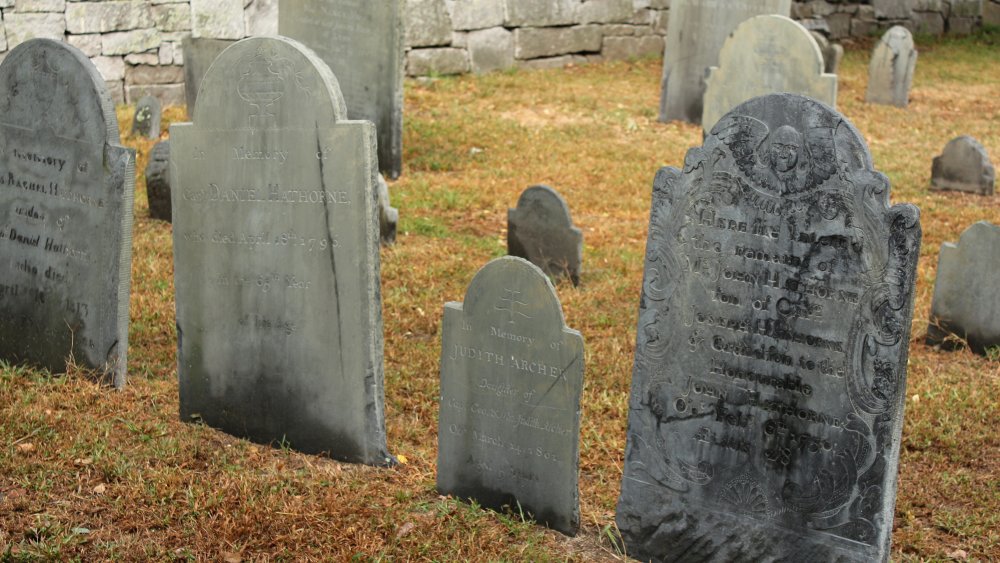
The World's Most Haunted Cemeteries

The Strange History Of The Weekly World News

Hyundai Promises Flying Cars For Uber By 2023

Ancient 'Chewing Gum' Reveals How Woman May Have Looked 5,700 Years Ago

People Who Went Missing At Sea
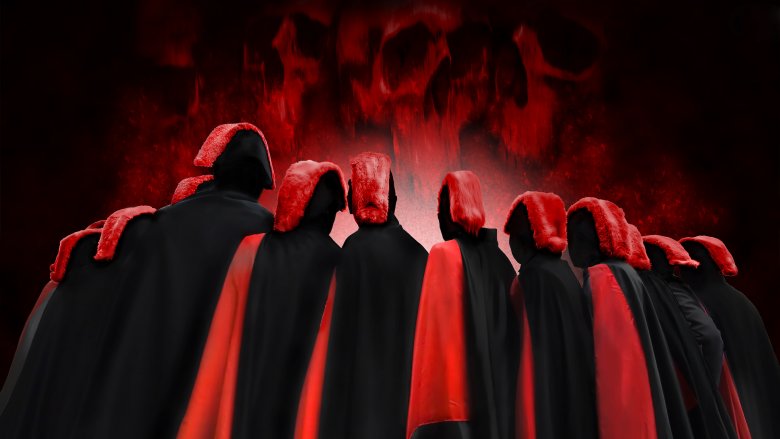
What Really Goes On At Bohemian Grove

Popular Places That Are Now Ghost Towns
